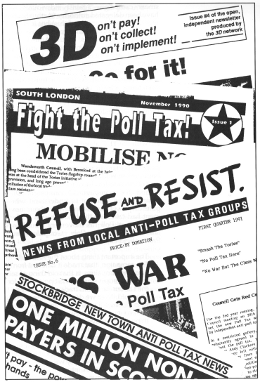In , a tax resistance campaign in Ontario targeted the provincial sales tax. The Ottawa Citizen covered the campaign .
Province-wide sales tax boycott urged
Peterborough (CP) The Ontario sales tax boycott is heading for a showdown.
Residents of the province are being asked to boycott the provincial sales tax by purchasing any taxable item and refusing to pay the seven-per-cent levy.
The Peterborough chapter of Human Action to Limit Taxes issued the challenge following a meeting attended by about 50 people.
“As individuals we are lost,” said Verna Perry of Douro, just north of Peterborough. “But as a group we would have some impact.”
Under the provincial Retail Sales Act, a customer is not required to pay sales tax at the time of the purchase. A little-known regulation allows a merchant to forgo collection of sales tax if he receives from the customer a written refusal which includes the customer’s name and address.
The organizer of the Peterborough chapter is Bruce Knapp, 63, who joined the Western Canada-based group shortly after he gained national attention in by refusing to pay 69 cents sales tax on a can of paint costing $9.80.
Knapp had hoped the government would take him to court to collect the amount owing so that he could use what he called a “foolproof defence,” the nature of which he refused to disclose. However, the provincial revenue ministry took the money out of a bank account which Knapp had forgotten.
Knapp said the group is not aiming to abolish the sales tax.
“All we’re demanding of politicians is to stop messing around with our money,” he said. “Spend it wisely.”
He cited federal aid to corrupt regimes and the recent Ontario government purchases of a jet aircraft for cabinet ministers and 25 per cent of Suncor Inc. as examples of wasteful government spending.
Meanwhile, the Toronto-based accounting firm of Deloitte Haskins and Sells Canada has published a free booklet listing several legal ways Ontario residents can avoid paying sales tax.
The booklet includes such tips as buying large children’s clothing for small-sized adults or buying baby-skin care products as substitutes for adult versions.

